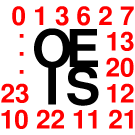A post by Arnold Kling got me dredging up some thoughts from the back of my mind concerning the non-profit sector. For a long time I’ve had mixed feelings about this sector. On the one hand, I regard non-profit organizations as institutions (and I regard institutions as the enemy of thick individualism) which of course is an entry in the minus column. On the other hand, non-profit status per se appeals to my anagorism and suspicion of the profit motive.
Kling uses the following table to illustrate the differences between for-profit and non-profit entities:
| Profit-Seeking | Non-Profit |
| Investors | Donors |
| Management | Agencies |
| Consumers | Beneficiaries |
This doesn’t quite match my understanding of the situation. I would use “Customers” rather than “Consumers” in the lower left corner cell. Every consumer (in this particular context) is a customer, but not every customer is a consumer. There are, after all, some important differences between B2B and B2C commerce. A consumer, unlike a business customer, is an individual. Actually, the inclusion of the word ‘consumer’ in the table is what unleashed the present post from the mental stew. The trend toward referring to “Beneficiaries” of both public and charitable agencies as “consumers,” like most campaigns of conservative messaging and framing, has not exactly been subtle. This tendency is one more reason for my “I hate charity” attitude. All charity is philanthropy, but not all philanthropy is charity. The forms of philanthropy I most admire (and actually do try to support, even with my meager means) are those that are out to change the world. Charity, as I understand the term, is about changing individuals. The interpersonal manifestation of charity is what is commonly referred to as “making someone one’s project.” A good popular culture example is the “takeover makeover” described in the song Popular from the Broadway musical Wicked. Resistance to this practice consumes a lot of mental energy I’d much rather be free to invest in other things, and I wish the prevailing mores and norms treated it as atrocious etiquette or something. The institutional form of charity is infinitely worse. This is especially the case if the charity in question uses means testing. At any rate, institutional charity is often literally about re-formatting a personality to reflect middle class norms, such as dressing conservatively or self-identifying as a homeowner. The most abusive charities, of course, are those connected with evangelical charities (basically any organization with “rescue mission” in its name) who speak in terms of people “hitting rock bottom.” Use of this phrase by anyone (especially when referring to themselves) should in all cases be interpreted as code for “Yes, Virginia, I’m one of those people who believe human nature is inherently rotten.” As an anarchist, I hold such attitudes in actual contempt.
In Kling’s analysis (referencing the table above) the argument is more classic liberal than paleo-conservative. Human nature essentialism is still at the core of it, but to the lesser charge of being inherently self-interested, and maybe a little bit inherently lazy. Yes Virginia, I’m the kind of anarchist who sees nothing wrong with regarding liberals as a lesser evil than conservatives. Anyway, according to Kling:
In the profit-seeking sector, there is tension among all three groups. Shareholders and managers would like to sell to consumers at the highest possible price and lowest cost. Consumers want the opposite. Shareholders would like management to be maximally effective and minimally compensated, and management wants the opposite. But, as you know, the forces of competition force an alignment of interests. In particular, consumers have a strong say in what happens, because they can choose how much they are willing to pay for what the business is selling.
In the non-profit sector, donors are comparable to shareholders and agencies are comparable to management. But the beneficiaries have no say in the matter.
In short, competition is what lights the fire under our buns, and is uniquely qualified to motivate us (us agents) to be accountable to our principals. As I suggested above, the reason beneficiaries have no say in the matter is because they (by their very status as beneficiaries) are deemed incompetent to run their own lives. Also, the fact that they bring no money to the table means they command no resources in the type of command economy known as a market economy. The market may be the sine qua non standard of efficiency in allocation of resources, but with the huge caveat that the criterion of efficiency is the budget line, that is, cardinal utility constrained by income. The idea that business does philanthropy better than philanthropy has become quite a hobby horse at the Library of Economics and Liberty blog. They’re really catapulting that message aggressively. Apparently the Reagan-era campaign to replace social programs with “volunteerism” was just the beginning. It seems the goal of really hard-core laissez-faire ideology is not just elimination of the public sector, but the entirety of human activity taking place within the for-profit sector, which I can only imagine resulting in the efficient sorting of all individuals into the categories “asset” and “liability.” No activity without a business model, without which we are aimless and unaccountable. I’m not on board with this. With me, dystopia is not an option.
I hope to find a good analytical treatment of the anarchist ideal of mutual aid. Any suggestions?

Leave a Reply